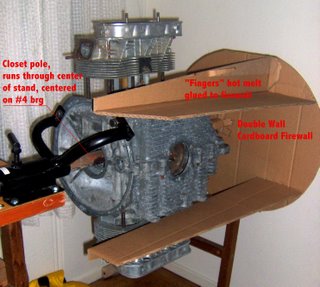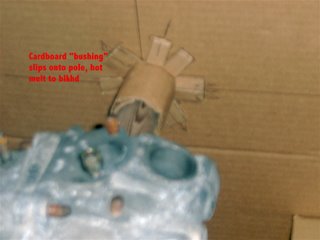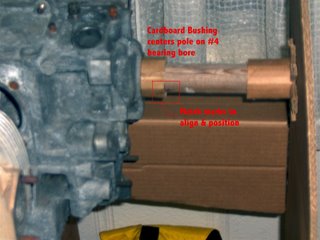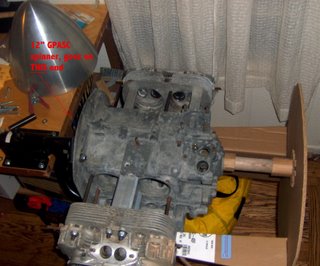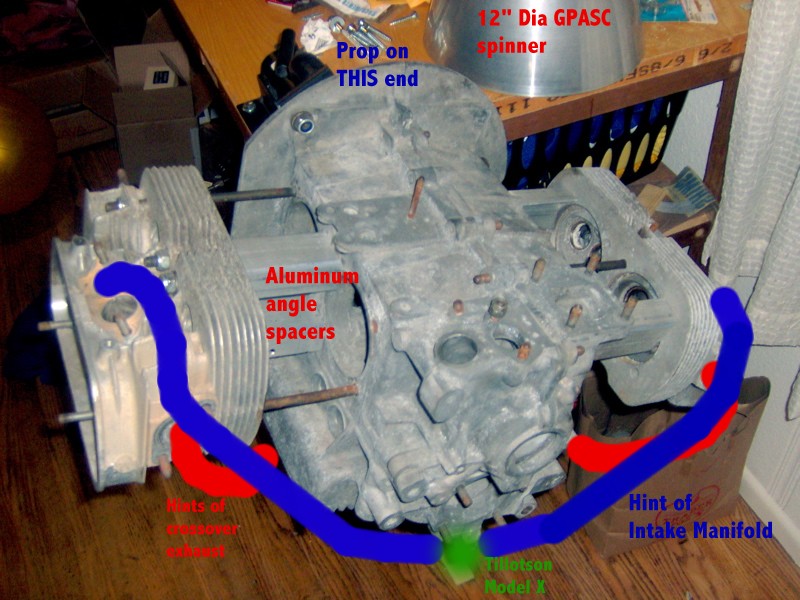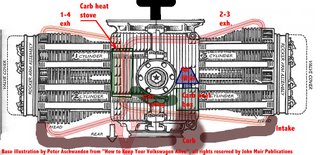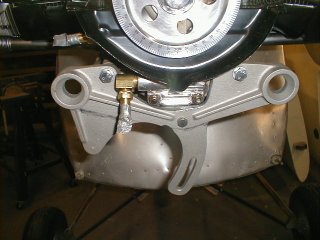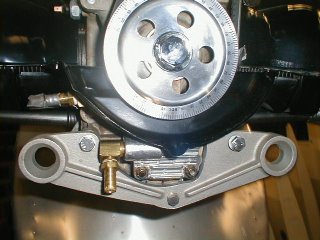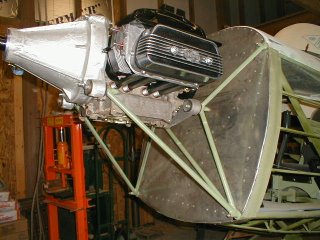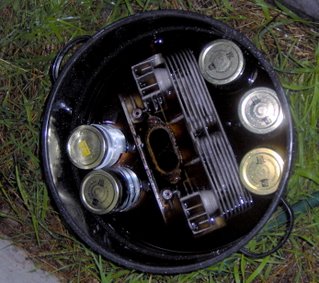VW Powered Homebuilt Aircraft Accidents
Partisans of various brands of VW aeroengines like the throw stones at each other about the service experience of The Other Team. NTSB reports tell the truth, so here are links to every one I could find mentioning "VW" "Volkswagen" "Aero Vee" "Aerovee" "Great Plains" "Revmaster" "HAPI" "Mosler" "TEC" "Limbach" since 1962 in the NTSB database that seemed to engine related.
Great Plains Powered Mini Imp, sloppy mechanic-ing.
Incredibly sloppy installation.
Revmaster spit a pushrod.
2180 KR-2, apparently quit in flight, who knows why? May have been a Great Plains - HAPI didn't believe in strokers.
Aerovee powered Sonex, shrink fit hub let loose.
Apparently a Revmaster, bad fuel system installation.
??? Chris-Teena engine failed in flight.
Owner overhauled engine failed in less than 25 hours, scored piston walls.
Unknown engine type "...fitted with a guillotine slide type carburetor" failed when throttle closed.
Unknown engine type WAY too lean.
First and last flight of an underpowered VP-1
Dragonfly + a poorly performing carb = one quadraplegic and a pile of junk.See also this site for more on this plane, crash, and the pilot's new life.
Jack Lockamy's Type IV Sonex, prop hub separated from GPASC/SCAT crank.
Ignition wire failure.
First flight of the first completed Noon Patrol Nieuport, loose distributor clamp. A short between the earlobes.
Ellison TMI and bad gas/neglect.
Rear oil seal failed. HAPI? NOTE: this is a lesson to all: follow the Official VW handbook procedure to install the rear seal! NO RTV! Use the (cheap) special tool to seat it, not a block of wood and a hammer!
Loose throttle cable.
Sloppy hub installation.
No end play = seized engine.
VP-1 engine failed on takeoff.
Bad magneto coil downs Vp-1.
Carb ice on a slide body - they said it couldn't be done. Note: Carb ice was NOT PROVEN; this was the explanation offered by the accident pilot.
??? lost power, crashed. The date and the airframe suggest the previous generation of Aerovee, but that's FAR from proven.
Revmaster unknown power loss, carb ice mentioned as a possibility. There is that impossible slide valve carb ice again, although to be fair, there is no suggestion this airplane has a Revmaster carb, and it WAS fitted with carb heat, which WAS on. Revmaster idea of carb heat however is to pull warm air off the bottom of the case...you come to your own conclusions.
Revmaster almost certainly carb ice. Take a look at the carb heat for a Revmaster. Now, you just took off, in the rain. Think the case will be warm enough to heat the intake air enough to melt the ice?
Loose carburetor jet on a Mosler (formerly HAPI) engine. HAPI Super Carb?
Carb ice on a Mosler, even with carb heat on. POSA (slide valve) carb is likely, but NOT PROVEN.
HAPI engine run too lean, died with the man who built it.
I have long thought, based on physics and very little actual evidence, that running a slide valve carb without TRUE carb heat (from at least two exhaust pipes) is insane. I was a little surprised these reports seem to confirm my THEORETICAL presumption.
There are black marks against ALL vendors, but the is not enough data here to make a call between them. Most of these reports don't identify the conversion vendor.
Most faults seem to be behind the eyeballs of the pilots/builders, and ignition and fuel systems problems are manifestations the bulk of those. Careful attention to Firewall Forward
would have saved a lot of these crashes and pilots. Every word of that book is written in blood.
